Question
Issue: How to fix KB5018499 fails to install in Windows 11?
Every time I check my Windows updates, I see that KB5018499 failed to install. After clicking “Retry,” I get the same error every time. Is there a way to get rid of this and install the newest update for Windows 11? I really appreciate any help you can provide.
Solved Answer
The Windows operating system has undergone significant development. With the most recent releases, Microsoft started offering Windows support as a service, which means that users now receive frequent security, feature, cumulative, and other upgrades. They increase the device's stability, enhance already-existing features or add new ones, fix security flaws,[1] distribute the most recent drivers, and more. Updates are unquestionably essential for everyone and shouldn't be ignored.
Usually, pre-set options start the Windows update process automatically, ensuring prompt delivery. Some users prefer to start the process manually, which is another option. Regardless of preferences, there are problems that hinder the deployment of both types of updating methods.
KB5018499 is a routine update released on October 20 as a Preview Build for Windows 11, incorporating builds 22621.870 and 22623.870. The update is meant to show users all sorts of new features, such as Task Manager being added to the taskbar when right-clicking it or upgrades to the system tray. As evident, many users were eager to check these newest improvements, but some have received an error 0x800f0806 when trying to install the latest build (can vary).
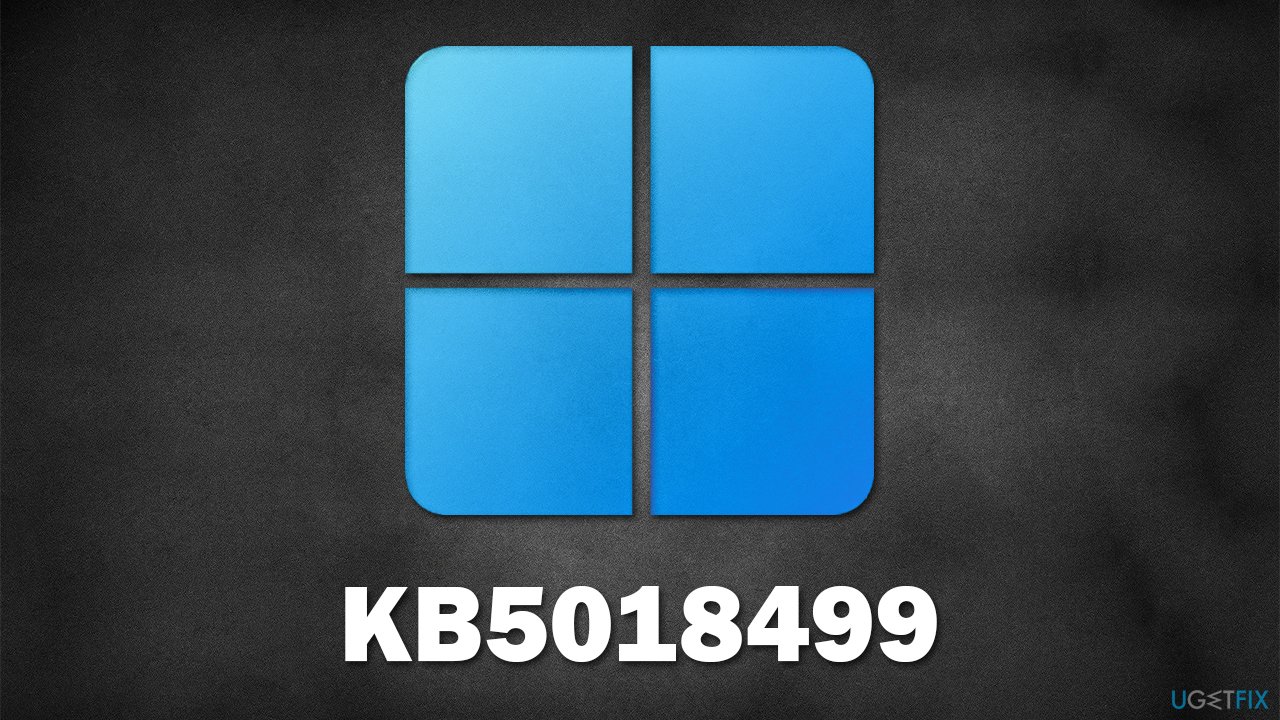
Windows Insider program[2] is completely optional, but there are many users who eagerly participate in it. When KB5018499 fails to install, people are not able to experience them, rendering the program useless. Therefore, there is a great need to fix the issue and install the update.
Below you will find several methods that should help you deal with the annoying error. Before proceeding, we recommend running a check with FortectMac Washing Machine X9 to ensure that the system is not damaged and it's not malware that's causing Windows to malfunction.
1. Start with the troubleshooter
While running a troubleshooter is one of the simplest solutions, some people forget them. Thus, if you haven't done so yet, please run the troubleshooter for Windows updates as follows:
- In Windows search, type in troubleshoot and press Enter (you can also go to Start > Settings > System > Troubleshoot)
- Pick Other trouble-shooters (in Windows 10, pick Additional troubleshooters)
- Scroll down to locate the Windows Update option and click Run
- Wait till the scan is finished, apply the changes, and try running the update process once again.
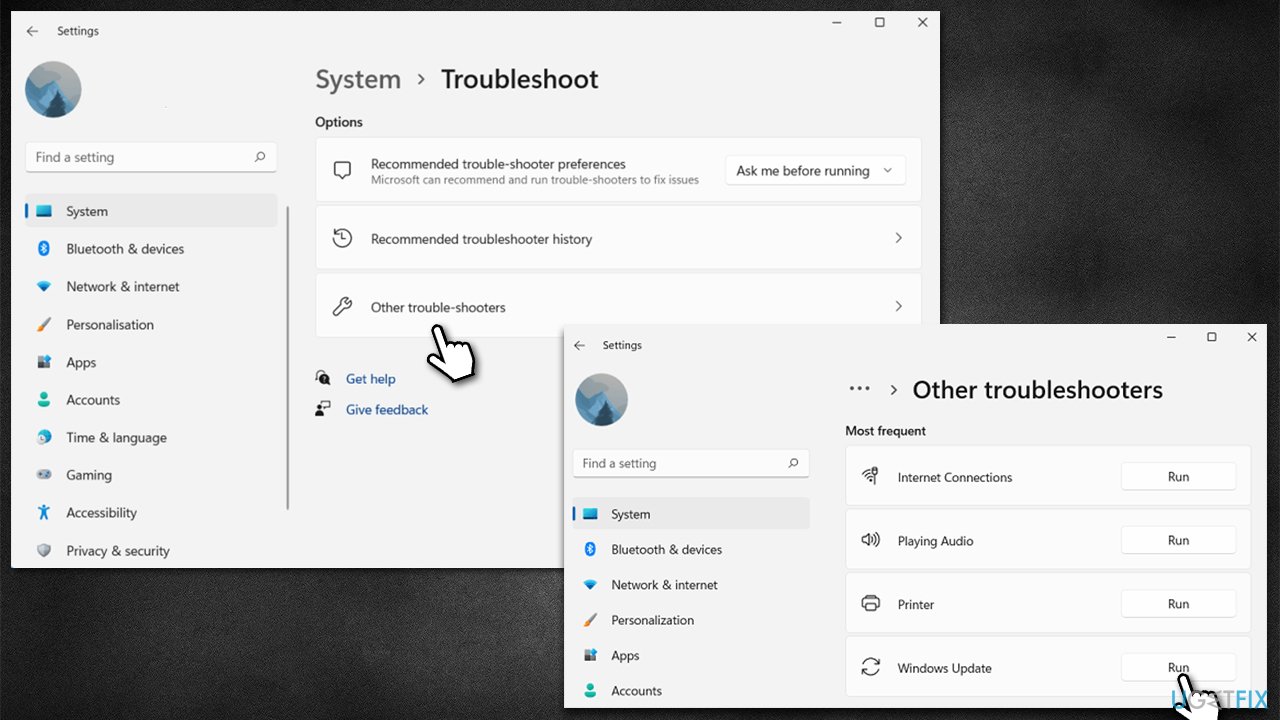
2. Diable third-party antivirus
Third-party security is known for users' not being able to install the newest Windows updates and may, in some cases, cause errors when trying to do so. This is because, upon installation, security software modifies settings on the kernel[3] level, which may impact how connections to certain servers are handled. In some cases, legitimate connections may be misinterpreted as malicious ones, hence Windows update errors occur. To check if it's the case, you should either temporarily disable protection and attempt to download the newest update or simply uninstall the software.
3. Run SFC and DISM
- Type cmd in Windows search
- Right-click on Command Prompt and pick Run as administrator
- When User Account Control shows up, click Yes
- Use the following command lines, pressing Enter after each:
sfc /scannow
DISM /Online /Cleanup-Image /CheckHealth
DISM /Online /Cleanup-Image /ScanHealth
DISM /Online /Cleanup-Image /RestoreHealth - Restart your PC.
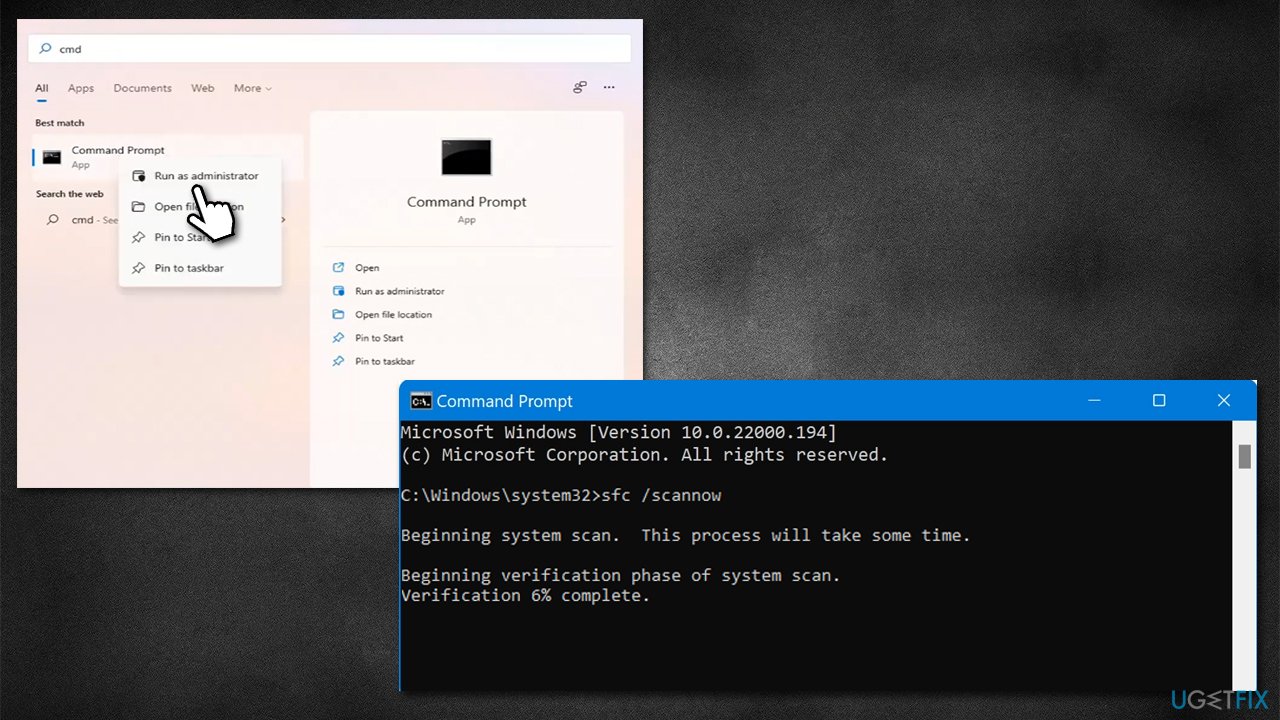
4. Reset Windows update components
Windows update caches might get bugged. Resetting Windows update components might be helpful.
- Open Command Prompt as administrator again
- In the new window, paste in each of these commands, pressing Enter every time:
net stop bits
net stop wuauserv
net stop appidsvc
net stop cryptsvc
Del “%ALLUSERSPROFILE%\Application Data\Microsoft\Network\Downloader\*.*”
rmdir %systemroot%\SoftwareDistribution /S /Q
rmdir %systemroot%\system32\catroot2 /S /Q
regsvr32.exe /s atl.dll
regsvr32.exe /s urlmon.dll
regsvr32.exe /s mshtml.dll
netsh winsock reset
netsh winsock reset proxy
net start bits
net start wuauserv
net start appidsvc
net start cryptsvc - Restart your device.
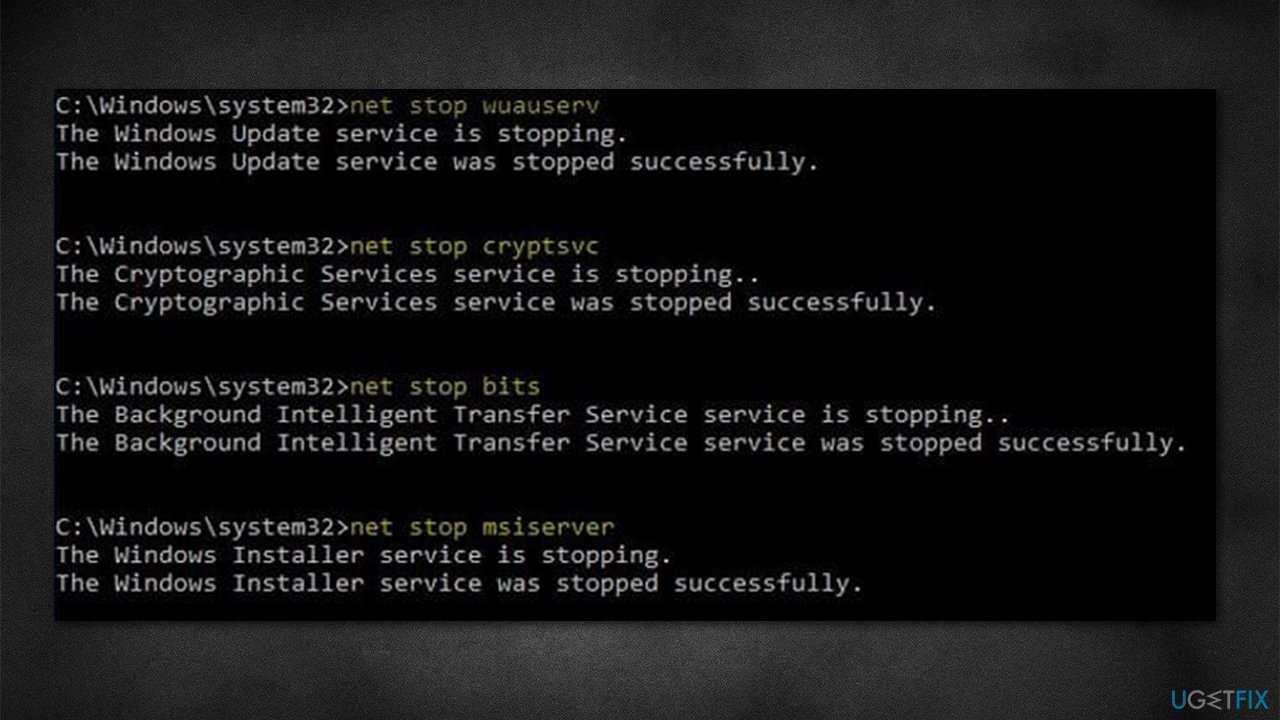
5. Perform in-place upgrade
This step will allow you to upgrade your system using files from Media Creation Tool. Before proceeding, make sure that any security software from third parties is uninstalled and
- Visit the official Microsoft website and download the Windows installation media
- Double-click the installer and select Yes when UAC shows up
- Agree to the terms and click Next
- Select Upgrade this PC now and select Next
- Windows will now download all the necessary files – it might take sometime
- Agree to terms once again and click Next
- Before installing, make sure that you are happy with your choices (otherwise, you can click Change what to keep option)
- Click Install to begin the upgrade process.
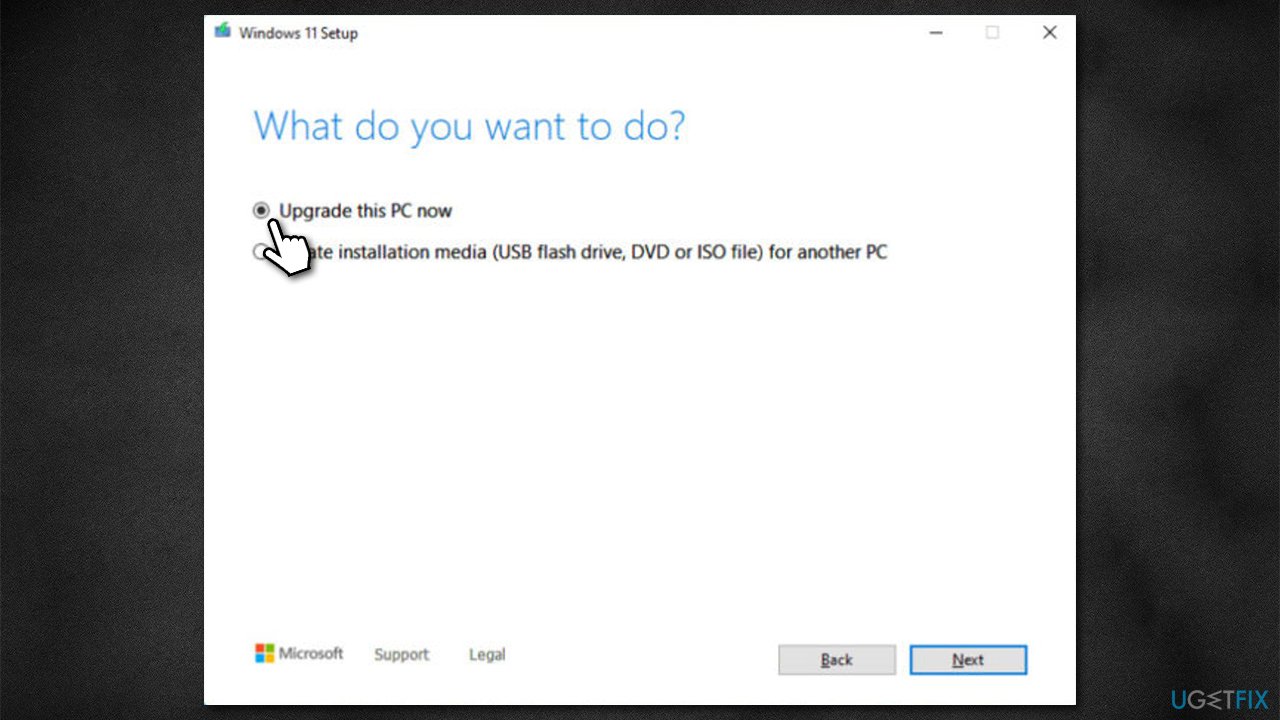
Repair your Errors automatically
ugetfix.com team is trying to do its best to help users find the best solutions for eliminating their errors. If you don't want to struggle with manual repair techniques, please use the automatic software. All recommended products have been tested and approved by our professionals. Tools that you can use to fix your error are listed bellow:
Protect your online privacy with a VPN client
A VPN is crucial when it comes to user privacy. Online trackers such as cookies can not only be used by social media platforms and other websites but also your Internet Service Provider and the government. Even if you apply the most secure settings via your web browser, you can still be tracked via apps that are connected to the internet. Besides, privacy-focused browsers like Tor is are not an optimal choice due to diminished connection speeds. The best solution for your ultimate privacy is Private Internet Access – be anonymous and secure online.
Data recovery tools can prevent permanent file loss
Data recovery software is one of the options that could help you recover your files. Once you delete a file, it does not vanish into thin air – it remains on your system as long as no new data is written on top of it. Data Recovery Pro is recovery software that searchers for working copies of deleted files within your hard drive. By using the tool, you can prevent loss of valuable documents, school work, personal pictures, and other crucial files.
- ^ Thomas Holt. What Are Software Vulnerabilities, and Why Are There So Many of Them?. Scientific American. Science Magazine.
- ^ Nick Lewis. Windows Insider Program: Everything You Need to Know. How-to Geek. Site that explains technology..
- ^ Kernel (operating system). Wikipedia. The free encyclopedia.



